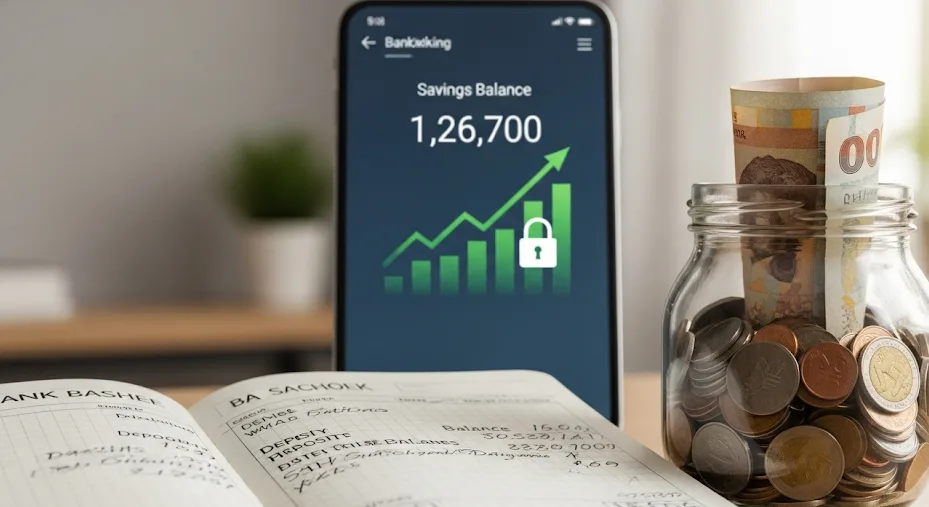
As the UK continues to navigate inflation and economic uncertainty, savers are increasingly looking for ways to make their money work harder without taking on unnecessary risk. With interest rates at their most attractive levels in years, 2025 presents a valuable opportunity to take advantage of high-yield savings accounts. But with so many options available, knowing where to place your money — and under what conditions — can make all the difference.
Why Interest Rates Are Back in Focus
In recent years, the return on traditional savings had been relatively poor. However, with the Bank of England raising its base rate to combat inflation, banks and building societies have responded by offering significantly improved interest rates on savings accounts.
This shift has opened the door for everyday savers to benefit from higher returns — but only if they choose accounts strategically. A difference of just one or two percentage points can translate into hundreds of pounds in interest over the course of a year, especially for those holding larger balances.
Understanding the Types of Savings Accounts
Before choosing the best account, it’s essential to understand the different options on offer. Each type has its own advantages and trade-offs:
- Fixed-rate bonds offer some of the highest returns but require you to lock away your funds for a set period, typically 1 to 5 years.
- Easy-access savings accounts provide flexibility to withdraw at any time, though rates may be slightly lower.
- Regular savings accounts reward monthly contributions with attractive interest, but usually impose limits on how much you can deposit.
- Cash ISAs provide tax-free interest, making them especially useful for higher-rate taxpayers, although their returns are not always the most competitive.
Each option serves a different purpose, and choosing the right one depends on your financial goals and need for flexibility.
What to Consider Before Opening a High-Interest Account
It’s tempting to simply chase the highest advertised rate — but that’s not always the smartest strategy. Start by thinking about how likely you are to need access to your savings. Locking your money into a fixed account might seem appealing for the return, but if an unexpected expense arises, withdrawing early could result in penalties or lost interest.
Also pay close attention to account conditions. Some providers offer a high introductory rate for the first 12 months, only to reduce it sharply afterwards. Others may limit the number of withdrawals you can make before the interest rate drops. Reading the terms and conditions carefully is crucial.
Security is another factor. Make sure the provider is regulated by the Financial Conduct Authority (FCA) and that your funds are protected by the Financial Services Compensation Scheme (FSCS), which covers up to £85,000 per person, per institution.
Top-Performing Savings Accounts in 2025 (So Far)
Rates change regularly, but as of early 2025, a few banks and building societies are standing out:
- Chase continues to offer a market-leading easy-access account with a rate just above 5%, ideal for those who want both growth and flexibility.
- Atom Bank and Zopa have launched fixed-rate products with returns reaching 5.4% on one-year terms.
- Coventry Building Society has remained competitive with its fixed-rate bonds, often surpassing some of the high street giants.
- NatWest and Barclays have improved offers for existing customers, sometimes bundling higher rates with current accounts or cashback features.
Comparison websites such as Moneyfacts, MoneySavingExpert and Which? Money remain excellent resources to track the latest offers across the market.
Smart Ways to Maximise Your Savings
Choosing a good account is only part of the strategy. To truly make the most of your savings in 2025, consider these tips:
- Mix account types — keep some funds in easy-access for emergencies and the rest in a fixed-rate product for better returns.
- Review regularly — interest rates and account terms can change, so checking every six months helps ensure you’re not missing better deals.
- Use your ISA allowance — up to £20,000 per year can be saved tax-free in an ISA, which is particularly useful if you’re already earning interest close to or above the Personal Savings Allowance.
It’s also worth noting that inflation still poses a challenge. Even with higher interest rates, real returns may be modest if the inflation rate exceeds your savings growth — but it’s still better than leaving your money in a non-interest-bearing account.
Next Steps: Take Action While Rates Are Still Attractive
High-interest savings accounts are once again a viable tool for growing wealth safely. If you haven’t reviewed your savings in some time, now is a good moment to take stock, compare offers, and move your money to a more productive home.
Start by identifying how much of your savings need to remain accessible, and how much you’re comfortable locking away. Then, explore current market rates, prioritise accounts with transparent terms, and consider using a portion of your ISA allowance if it suits your situation.
With thoughtful planning and timely decisions, your savings can now generate meaningful returns — without exposing you to the risks of the market.

 How Hedge Funds Manipulate the Market: Unveiling Secrets
How Hedge Funds Manipulate the Market: Unveiling Secrets  The Impact of AI on the Gig Economy: Transforming Futures
The Impact of AI on the Gig Economy: Transforming Futures  Will the U.S. Dollar Remain the World’s Reserve Currency?
Will the U.S. Dollar Remain the World’s Reserve Currency?